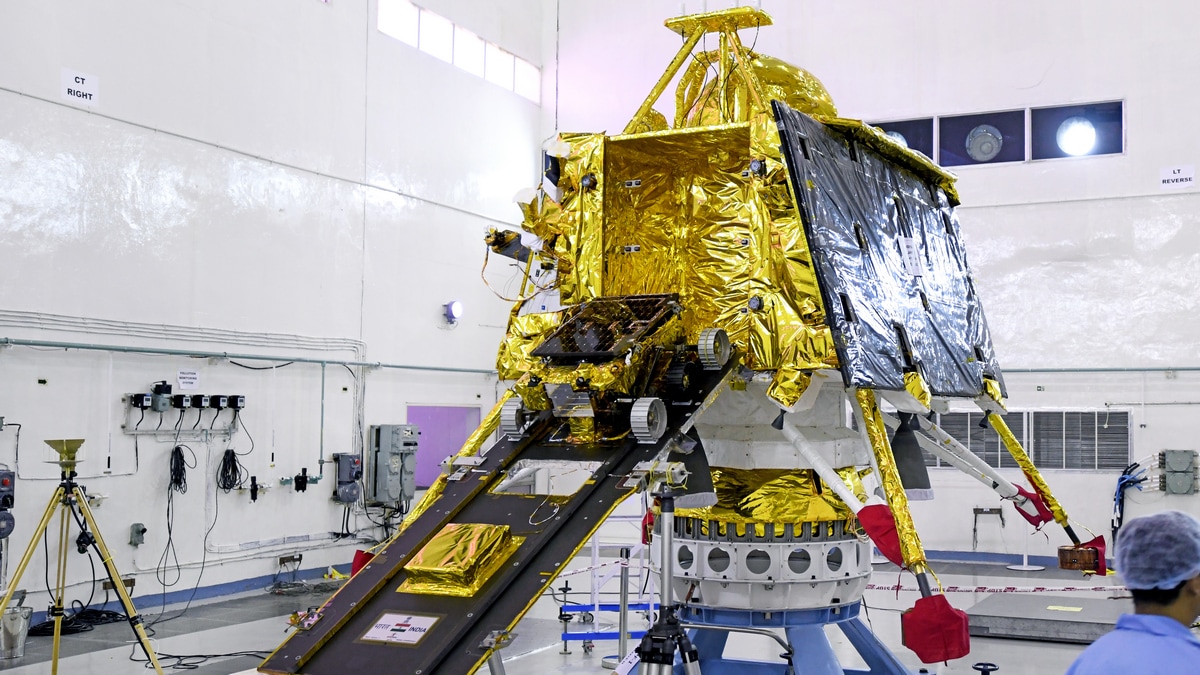


Indian Space Research Organisation (ISRO) has successfully placed two satellites, weighing 220kg, into a circular orbit of 475 km for a crucial space docking technology demonstration. This mission also included the launch of POEM-4 with 24 payloads from startups, industries, and academia. Scientist S Somanath stated that the docking process is expected to take place on January 7, after operations at ISTRAC Bengaluru from December 31. This mission is a major step towards future space missions for India.
Space Docking: India's Technological Leap into the Future
Introduction
Space docking, the process of two spacecraft connecting in orbit, is a crucial technology for future space exploration missions. The Indian Space Research Organization (ISRO) recently achieved a significant milestone in this field with the successful launch of two satellites for a space docking demonstration.
ISRO's Space Docking Experiment
On December 31, 2022, ISRO launched two 220-kg satellites into a circular orbit of 475 km. The satellites are equipped with advanced navigation, guidance, and control systems. The docking process is expected to take place on January 7, 2023, after operations at the Indian Space Tracking and Control Centre (ISTRAC) Bengaluru.
This mission is a major step towards future space missions for India. It will demonstrate the country's capabilities in autonomous rendezvous and docking, which are essential for complex space operations such as satellite servicing, repair, and assembly.
Historical Background
The concept of space docking has been around for decades, but it has only been successfully implemented a few times. The first successful space docking was achieved in 1966 by the Soviet Union's Soyuz-1 and Soyuz-2 spacecraft. Since then, other countries, including the United States, Russia, and China, have also demonstrated their space docking capabilities.
Importance of Space Docking
Space docking is a critical technology for a variety of reasons:
FAQs
1. Why is space docking so important?
Space docking is important because it enables a variety of complex space operations, including spacecraft assembly, repairs, satellite servicing, scientific research, and space tourism.
2. Who has achieved space docking before?
The Soviet Union, the United States, Russia, China, and now India have successfully demonstrated space docking capabilities.
3. What are the challenges of space docking?
Space docking is a complex process that involves autonomous navigation, guidance, control, and precision rendezvous. Ensuring a successful and safe connection between two spacecraft in orbit is a significant technological challenge.
4. What is the significance of ISRO's space docking demonstration?
ISRO's successful launch and upcoming docking experiment demonstrate India's growing capabilities in space exploration and satellite technology. It is a major milestone towards future complex space missions and positions India as a leading player in the global space race.
5. What are the future applications of space docking?
Future applications of space docking include assembling and servicing modular space stations, repairing damaged satellites, conducting scientific experiments in space, and enabling space tourism.

In an effort to fight the ongoing air pollution crisis, Delhi conducted its first-ever official cloud seeding operation led by IIT Kanpur. The operation involved a small aircraft dispersing specially designed chemical flares into the atmosphere to create rain. While experts say rainfall could occur within 15 minutes to 4 hours, the actual timeframe depends on various factors such as wind direction and moisture content. If successful, the government plans to continue the operation in the coming days.

In the quest for stronger, luscious hair, we often overlook the importance of nurturing the roots. Fortunately, Ayurveda has long stressed the significance of this practice, which has now been backed by modern science. Studies have shown that herbs like Bhringraj and Amla can activate hair follicles, promoting new growth and delaying greying. Fenugreek, Neem, Hibiscus, and Ashwagandha are also found to be beneficial in strengthening and nourishing the scalp, resulting in thicker and healthier hair.

A college student shares her personal journey of becoming a vegetarian, despite facing challenges and health concerns. She then delves into an ethics class she took, where the concept of marginal cases were discussed. Following an article by philosophy professor Alastair Norcross, she concludes that even though individual action may seem insignificant, refusing to consume factory-farmed meat holds moral significance due to the potential to prevent immense suffering for animals.

On October 24, the global community commemorates World Polio Day to honor the legacy of Dr. Jonas Salk and the efforts of countless individuals and organizations in the fight against polio. This highly contagious and potentially deadly disease, once a widespread epidemic, is now largely preventable thanks to the development of a life-saving vaccine. India's successful eradication of polio serves as a testament to the importance of strong vaccination programs and collaborations in public health initiatives.

As winter arrives in India, so does the hazardous air pollution. Delhi NCR's AQI has already crossed the 400 mark, making it crucial to invest in air purifiers, especially after Diwali. Dyson, Qubo, HomePure, and Philips have launched high-quality air purifiers with advanced features to tackle different types of pollutants and create cleaner indoor air. With prices ranging from Rs 5,000 to Rs 1 lakh, these purifiers are a practical and timely purchase for a healthier living.

In a recent family vlog, Indian celebrity couple Shoaib Ibrahim and Dipika Kakar shared their "natural" hair care routine for their son, using a homemade mask made with rice flour, flax seeds, and coconut oil. However, experts warn that what works for adults may not be suitable for babies, whose sensitive skin and scalp could react to the ingredients. While the ingredients may improve hair texture, they do not necessarily promote hair growth. Instead, a healthy diet and good scalp care are more important in maintaining healthy hair.

A recent consumer study has found multiple brands of soft contact lenses in the U.S. to contain "forever chemicals" that can be harmful to both the body and the environment. The study, conducted by the nonprofit organization Environmental Health Sciences, tested 18 varieties of popular contact lenses and found all of them to contain markers for PFAS. Brands such as Acuvue, Alcon, and CooperVision were among the list of affected products. This news serves as a cautionary lesson on the potential risks of overusing contact lenses.

On the birth anniversary of Dr. APJ Abdul Kalam, the ‘Missile Man’ of India, tributes pour in on social media celebrating his life, vision and impact. A visionary scientist, inspiring leader and true patriot, Dr. Kalam's humility, compassion and constant interaction with students continue to inspire generations. His tireless efforts in defense, science and youth empowerment have strengthened India's path towards self-reliance and his legacy continues to motivate young minds to dream big and work hard for the nation.

Recent studies have found that extreme heat, particularly when combined with high humidity, can have a significant impact on mental health. A study in India showed that when wet bulb temperature exceeded 27°C, the probability of reporting severe depression increased by 0.5%, even when the temperature was slightly lower. This finding is consistent with global reviews that have linked high temperatures to mood disorders, increased hospital admissions for psychiatric conditions, and even elevated suicide risk. The Lancet has also published evidence that rising temperatures worldwide are a growing threat to emotional and cognitive health.

In a meeting with university officials in Udaipur, Rajasthan Governor Hari Bhau Bagde stressed the importance of incorporating India's ancient knowledge traditions into academic research. He highlighted the deep repository of knowledge in India since ancient times and urged scholars and scientists to draw upon this tradition in their work. Bagde also suggested making ancient texts available in university libraries for study and research purposes, in order to shape the intellectual abilities and love for the nation among the younger generation.